Flapper Skate
The Flapper Skate is the largest of all European Skates & Rays capable of reaching sizes of 2.5 metres nose to tail and 2 m across the wings. The largest measured skate to date in Orkney measured 2.3m nose to tail and 1.8 m across the wings, a Female fish estimated at just over 100kg.
BIOLOGY
Classification
The common skate, Dipturus batis (Linnaeus, 1758) formerly, Raja batis.
Now considered two separate species – The Flapper Skate , Dipturus intermedius and the Blue Skate, Dipturus batis.
Class: Elasmobranchii.
Order: Rajiformes.
Family: Rajidae.
The family Rajidae are known commonly as skates, in European waters long nosed species are called skate and short nosed species are called rays.
Reproduction
All species of skate & ray lay egg cases or ‘mermaid’s purses’ during reproduction. Flapper skate egg cases however, are much larger than other local species, such as the Blonde and Thornback Ray, and are normally over 25cm long. The protective leathery egg capsules have a large yolk supply which nurtures the embryos, whilst also allowing dissolved oxygen through to enable life. By laying their young in well-protected egg capsules with sufficient nutrients, the female skate cuts the time needed to care for their young, leaving the juvenile fish to fend for themselves after hatching. The downside of this behaviour is the risk of egg case predation, damage during rough weather and also being caught by commercial fishing operations, such as trawling and dredging.
IDENTIFICATION
The Orkney Islands, Northern Scotland, are home to the largest skate in the world; previously known as the Common Skate (Dipturus batis) but now considered to be two separate species, the Blue Skate (Dipturus batis) and the Flapper Skate (Dipturus intermedius). The latter, much larger species is resident in Orkney waters.
Flapper skate are the largest of all skate, reaching lengths of around 2.5 metres. Their upper sides are characterised by olive to brown rough skin, often with a variable pattern of lighter spots. The underside is darker in colour at birth, fading to light grey with age, often with a darker mottling around the snout and mouth. As with all skate and rays, male fish are distinguished from female fish by the presence of two long claspers that are used in reproduction. Male skate also have two small but pronounced thorn patches on the upper side of the wing tips (the alar thorns).
HABITAT & DIET
Flapper skate are strong swimming fish, and well adapted to fast flowing tidal waters. They can be found over various types of seabed, but prefer sandy and muddy areas. Around Orkney, they occur from the shallow coastal areas around the North Isles and in Scapa Flow to the deeper waters off the West Mainland coast
Flapper Skate have been observed in Orkney waters to lay egg cases on rough ground in close proximity to sediments, such as a boulder field skerry over sand. The egg cases are deposited loose and are negatively buoyant. The relative shelter from tidal flow the boulders create are enough to maintain the egg cases in situ.
The Flapper Skate is a top predator – capable of maintaining a varied diet, that includes hunting other fish species, molluscs and crustaceans but will also scavenge.
CONSERVATION
Bottom-trawl fishing in Orkney waters is one component of an increasing commercial fishing effort responsible for a sharp decline in Flapper Skate population and distribution. Adult and juvenile fish, as well as in-situ egg cases, are all of a size that are collected, and retained in commercial fishing gear as unwanted by-catch. The resulting high mortality, combined with the slow recruitment of juvenile fish into the population, would appear to be unsustainable. However, skate mortality has not only been at the hands of commercial fisheries, but also a result of ‘trophy fishing’- a practice where recreational anglers retain their captured skate for photographs later at the pier, with the fish then discarded. While EU fisheries legislation now prevents the retention of Flapper Skate (under the name Common Skate) on board any commercial fishing vessel in British waters – a vital step for the conservation of the species – there are no similar regulations for recreational fishers.
The International Union for Nature Conservation considers the species (under the old name Common Skate) to be Critically Endangered. As such, the IUCN consider it to be at a greater risk of global extinction than the blue whale or giant panda. We all have a responsibility to do what we can to protect this fish.
Male Flapper Skate Dipturus intermediUS
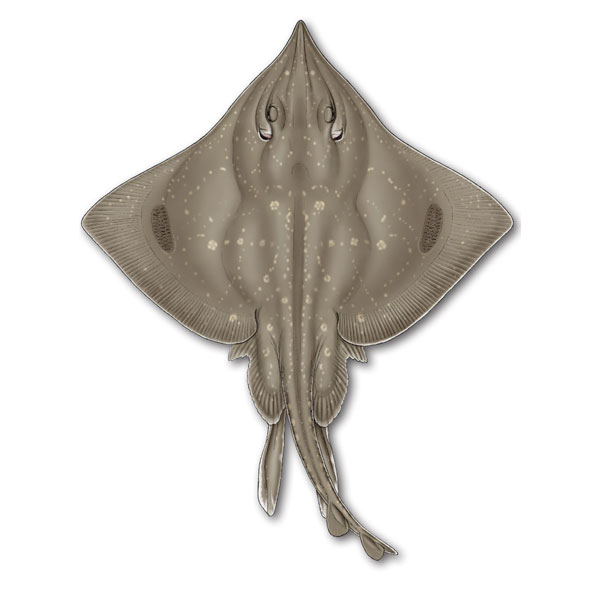
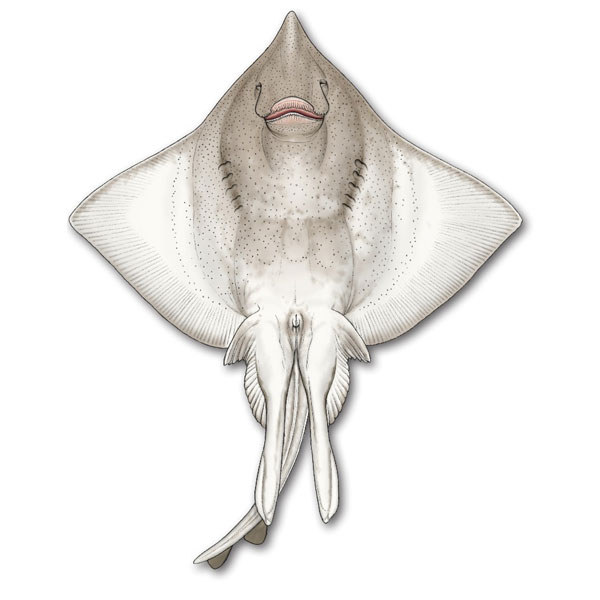
Female Flapper Skate Dipturus intermediUS
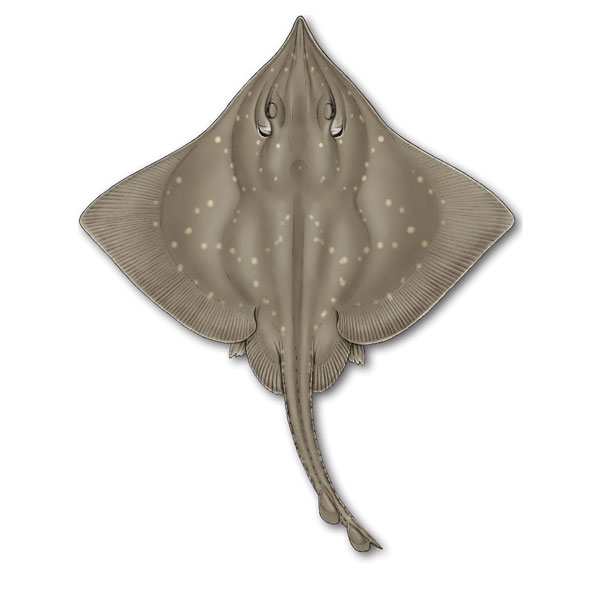
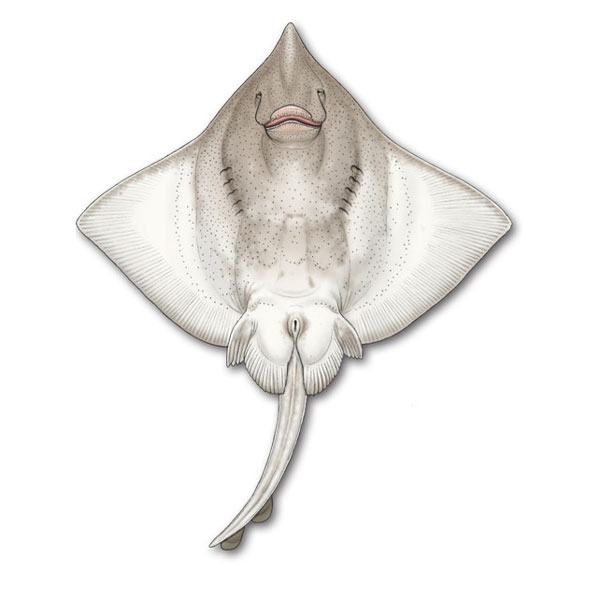
Juvenile Flapper Skate Dipturus intermediUS
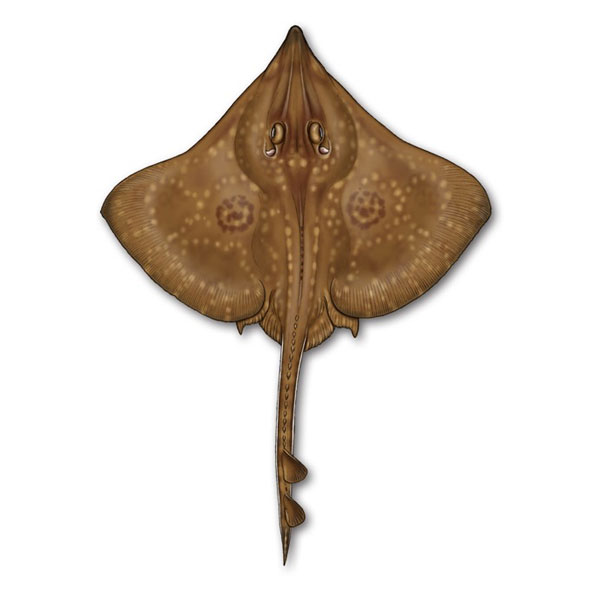
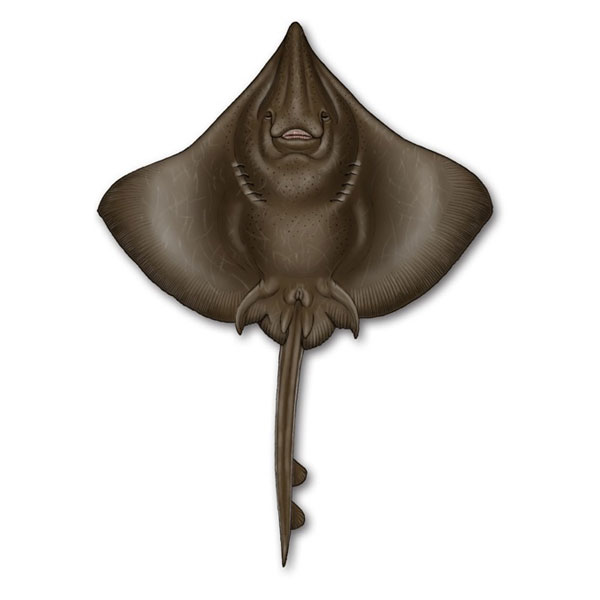
Flapper Skate illustrations copyright © Mark Dando
